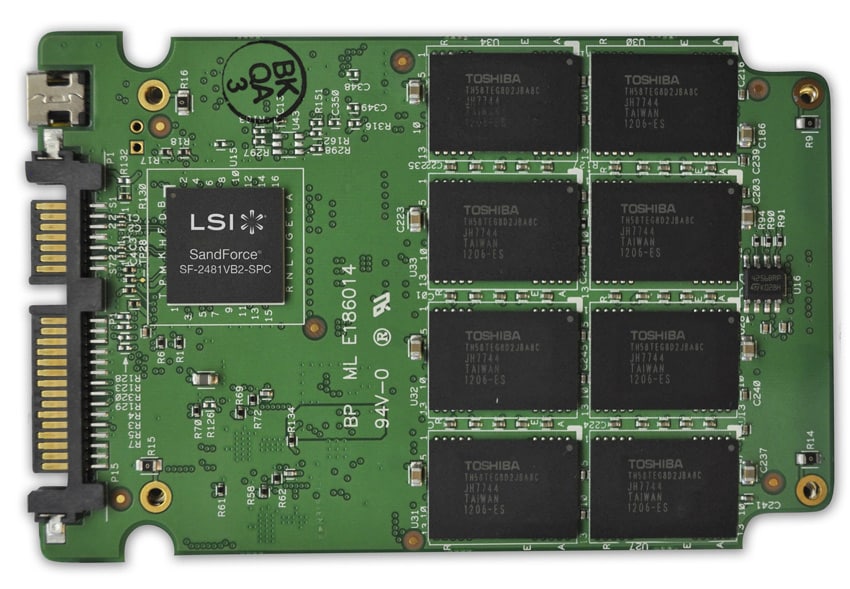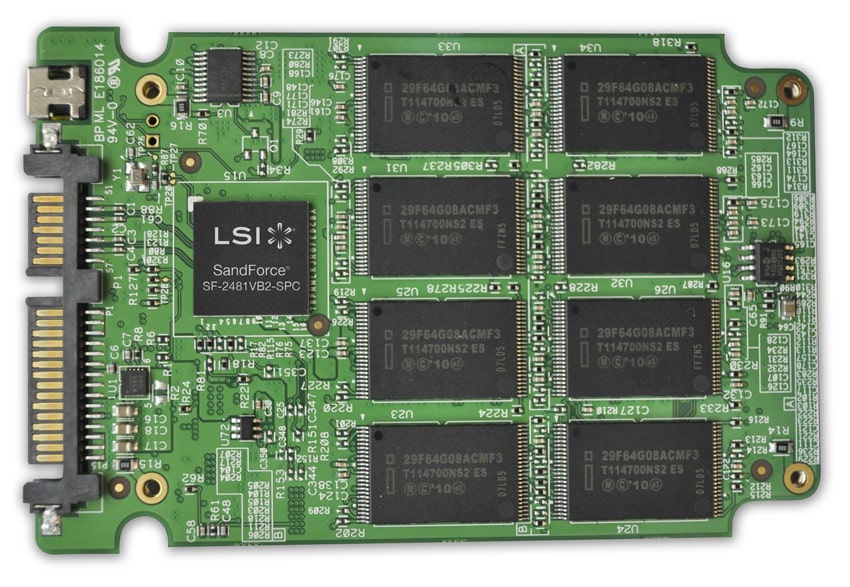LSI Corporation has demonstrated its new SandForce SF-2000 Flash Storage Processors (FSPs) with 19nm and 20nm NAND. Shrinking flash memory geometries such as new flash storage from Toshiba and Intel mean individual memory cells have increasing difficulty maintaining a charge. To optimize the reliability, data integrity, and retention of 19nm and 20nm flash storage, LSI’s SandForce SF-2000 FSPs will offer support for up to 55-bit errors per 512 byte sector and DuraClass, a new error correction engine.

SandForce SF-2000 Technology Overview
- Up to 6Gb SATA III (with SF-2500/2600, SF-2400, SF-2300, and SF-2200)
- Toggle, ONFi2
- No External DRAM
- ATA & TCG Security
- TRIM Command Support
- Drive Life Protection
- Power Performance Balancing
- Temperature Management
- Non-512B sector support (with the SF-2600)
- 512+DIF, 520, 524, 528, 4K, 4K+DIF
- Binary Capacities for Client
- Media Health Test (with the SF-2400)
- Nearly 2x Standard ECC above NAND limits (with the SF-2400)
- Two Package Options
- 14x14mm 400-TFBGA (16 byte lanes) & 0.65mm ball pitch
- 14x14mm 256-TFBGA (8 byte lanes) & 0.80mm ball pitch

According to IDC’s “IDC WW SSD 2011-2015 Forecast Update” (March 2012), shipments of SSDs in client and enterprise markets are cumulatively expected to exceed 100 million units in 2015, a 56 percent growth rate over 2011 shipments. LSI is working with the six leading NAND flash manufacturers to meet end-users’ reliability and endurance requirements for flash devices while leveraging smaller silicon geometries. DuraClass NAND flash management technology is one of LSI’s innovations designed for this growing market.
DuraClass Management Overview
- DuraWrite optimizes the number of flash program cycles to extend flash-rated endurance.
- RAISE (Redundant Array of Independent Silicon Elements) delivers improved reliability, for RAID-like protection and recovery from a single drive.
- Advanced Wear Leveling and Monitoring optimizes wear-leveling algorithms to extend flash endurance.
- Recycler intelligently performs “garbage collection” to erase invalid data while minimizing impact on flash endurance.




 Amazon
Amazon